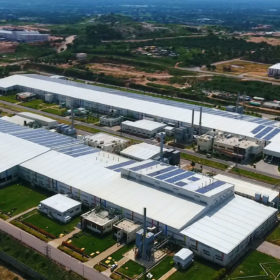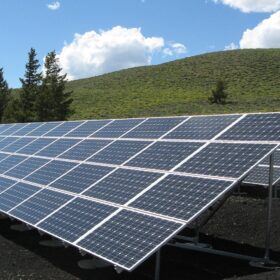The long read: A new test for trackers
The benefits of deploying bifacial solar panels on single-axis trackers are touted like snake oil these days, with promises of anywhere from 5 to 50% gains in energy output compared with a monofacial panel. Unfortunately, the field data that might delineate the actual energy gain of a bifacial panel on a tracker are hard to acquire, and the data that are available typically describe small-scale tests under tightly defined conditions.
Amara Raja to open 100 MWh Li-ion battery fab, eyes demand from EVs
Following hot on the heels of Exide Industries, lead acid battery maker, Indian-based Amara Raja Batteries Limited has said it will set up a 100 MWh lithium ion assembly plant in Andhra Pradesh. The company aims to establish a foothold in the energy storage market for electric vehicles.
US scientists create MPP algorithm to measure PV panel degradation
The algorithm is said to be able to examine the relationship between weather forecast data and the projection of electric circuit parameters. Through this innovation, Purdue University researchers claim they can interpret the routinely collected maximum power point (MPP) time-series data, to assess the time-dependent “health” of installed solar modules.
India’s solar dreams need storage push – IESA
With a rapid reduction in costs, solar plus storage can be an effective alternative for customers buying peak power from the grid. At the same time, utilities can avoid investments in peak capacity or eliminate load shedding by utilizing these resources.
Researchers propose doubling today’s solar panel efficiency using two weird tricks
By double stacking a perovskite-silicon solar cell and using the cell in a glass-on-glass bifacial solar module, scientists model that a 30-36% efficient solar module can be attained.
Cygni Energy raises US$6.4 million, aims to triple solar DC capacity
Hyderabad based Cygni Energy plans to utilize the capital to triple its solar DC solutions production capacity from 4,000 units to 12,000 by H1 2019, develop new technology-enabled products and streamline the product lifecycle, as well as expand nationally and internationally.
Funding the key obstacle to renewables in Asia
Banks categorize renewable energy projects as risky and believe they offer lower rates of return than fossil fuel schemes, making them reluctant lenders.
India to launch its own battery cell production
India’s PV sector is expanding at a serious pace, creating jobs and further securing energy supply for many businesses. Yet, sourcing battery cell technology at the current rate resulted in annual foreign exchange of Rs. 1012 crore creating deficits, that hopefully can be averted in the future.
Microlink Devices hits 37.75% efficiency for triple junction cell
U.S. technology company Microlink Devices has achieved a record efficiency of 37.75% on its triple junction thin film cells. The lightweight cell achieves a power density of more than 3000 W/kg, and is designed for use in satellites and unmanned air vehicles (UAVs). The new efficiency record is confirmed by the National Renewable Energy Laboratory.
Swedish scientists develop new method to reduce defects in organic solar cells
The researchers found that printed solar cells achieved a better performance when they used an active polymer material as glue.















